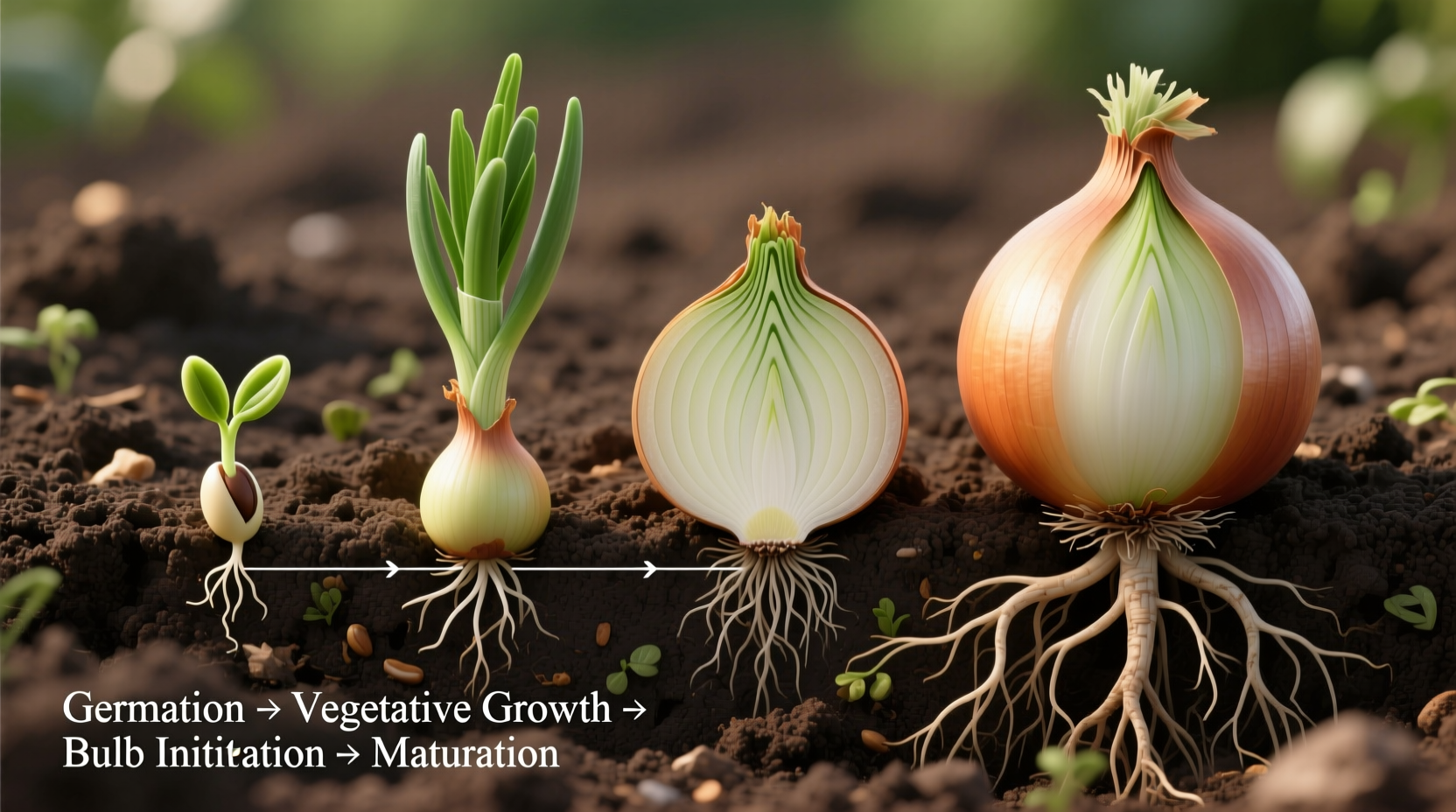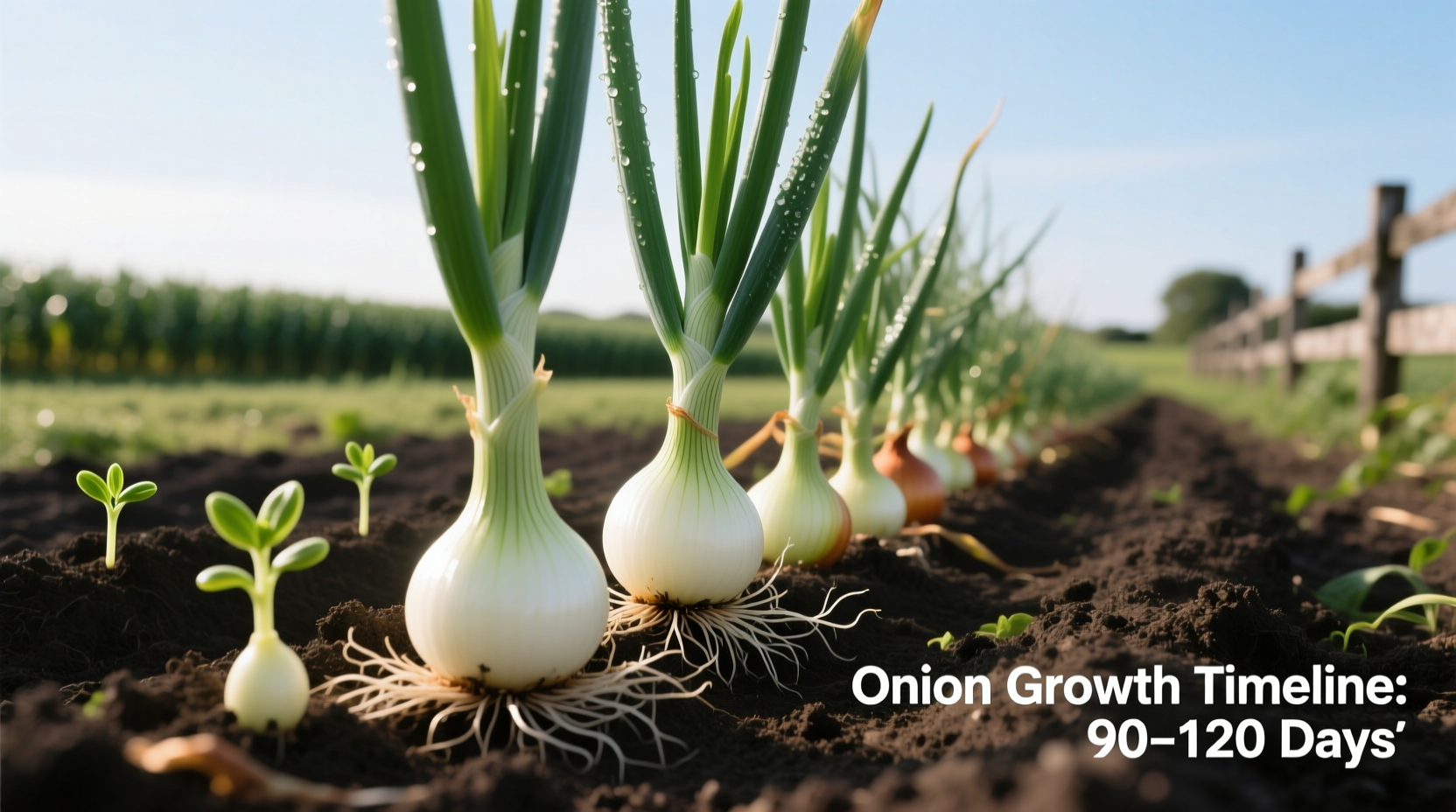Whether you're planning your first garden or optimizing your vegetable patch, understanding onion growth timelines is essential for a successful harvest. This guide breaks down exactly what to expect at each stage, with science-backed insights to help you grow perfect onions every season.
Why Onion Growth Timelines Vary: Key Factors Explained
Many gardeners are surprised when their onions don't mature on schedule. The reality is that onion growth depends on several critical factors that interact in complex ways:
- Day length requirements - Short-day (10-12 hours), intermediate-day (12-14 hours), and long-day (14+ hours) varieties each respond differently to seasonal light changes
- Temperature fluctuations - Optimal growth occurs between 55-75°F (13-24°C), with bulb formation triggered by specific thermal thresholds
- Planting method - Seeds, sets, and transplants follow different developmental pathways
- Soil composition - Well-drained, loose soil with pH 6.0-6.8 significantly impacts growth speed
| Onion Type | Days to Maturity | Best Planting Zone | Harvest Indicator |
|---|---|---|---|
| Green Onions | 20-30 | All zones | 6" height |
| Yellow Storage Onions | 100-175 | Zones 3-9 | Neck collapse |
| Red Onions | 90-150 | Zones 5-9 | Toppling foliage |
| White Onions | 95-120 | Zones 7-10 | Dry outer skin |
This comprehensive comparison, based on data from the USDA Agricultural Research Service, shows why selecting the right variety for your region dramatically affects your harvest timeline. Southern gardeners should prioritize short-day varieties like 'Texas Super Sweet', while northern growers need long-day types such as 'Walla Walla'.
Onion Growth Timeline: From Seed to Harvest
Understanding the precise developmental stages helps you anticipate problems and optimize care. Here's what happens at each phase:
Weeks 1-2: Germination and Early Growth
Onion seeds typically sprout in 4-10 days when soil temperatures reach 50°F (10°C). During this critical window, consistent moisture is essential - dry conditions cause erratic germination. Seedlings develop their first true leaves while establishing root systems.
Weeks 3-8: Vegetative Growth Phase
This is when onions focus on leaf production. Each leaf corresponds to a future bulb layer - more leaves mean larger bulbs. The University of Minnesota Extension confirms that optimal leaf growth during this phase directly determines final bulb size. Watch for the 'neck thickening' stage around week 6, signaling the transition to bulb formation.

Weeks 9-16: Bulb Development
As day length triggers bulb formation, the plant redirects energy downward. This critical phase requires consistent watering (1" per week) and balanced nutrition. Potassium deficiency during this stage causes poor bulb development. The Royal Horticultural Society notes that temperature fluctuations above 85°F (29°C) can cause premature bolting, ruining your crop.
Weeks 12-25: Maturation and Harvest
Natural leaf dieback signals approaching maturity. When 50% of tops fall over, gently push remaining plants to accelerate maturation. Proper curing (2-3 weeks in dry, ventilated space) completes the growth cycle, transforming immature bulbs into storage-ready onions.
Accelerating Your Onion Harvest: Proven Techniques
Want onions faster? These evidence-based methods can shorten your timeline:
- Start with sets instead of seeds - Skip the germination phase entirely (saves 3-4 weeks)
- Use black plastic mulch - Warms soil 5-10°F, accelerating early growth by 10-15 days
- Choose appropriate varieties - 'Red Baron' matures 20 days faster than standard yellow onions
- Optimize planting depth - 1" deep for seeds, 1-2" for sets (deeper planting delays emergence)
Common Growth Delays and How to Fix Them
When onions take longer than expected, these issues are usually to blame:
- Incorrect day-length variety - Using long-day onions in southern zones delays bulb formation
- Nitrogen overload - Excess nitrogen promotes leafy growth at bulb's expense
- Crowded plantings - Less than 4" spacing restricts bulb development
- Temperature stress - Prolonged cold below 50°F triggers bolting in some varieties
The Cornell University Gardeners' Resource emphasizes that proper thinning when plants reach pencil thickness prevents competition and ensures timely maturity. Many gardeners don't realize that harvesting green onions at 6" height actually encourages the remaining plants to grow larger bulbs.
Harvest Timing: How to Know When Onions Are Ready
Timing your harvest correctly affects both yield and storage life. Watch for these precise indicators:
- Natural toppling of foliage (50% or more fallen)
- Neck softening and collapse at the base
- Outer skins becoming dry and papery
- Distinct variety-specific color development
Harvesting too early produces small, poorly storing bulbs. Waiting too long risks neck rot and reduced shelf life. The optimal window is narrow - just 7-10 days between maturity signs and harvest for best results.











 浙公网安备
33010002000092号
浙公网安备
33010002000092号 浙B2-20120091-4
浙B2-20120091-4